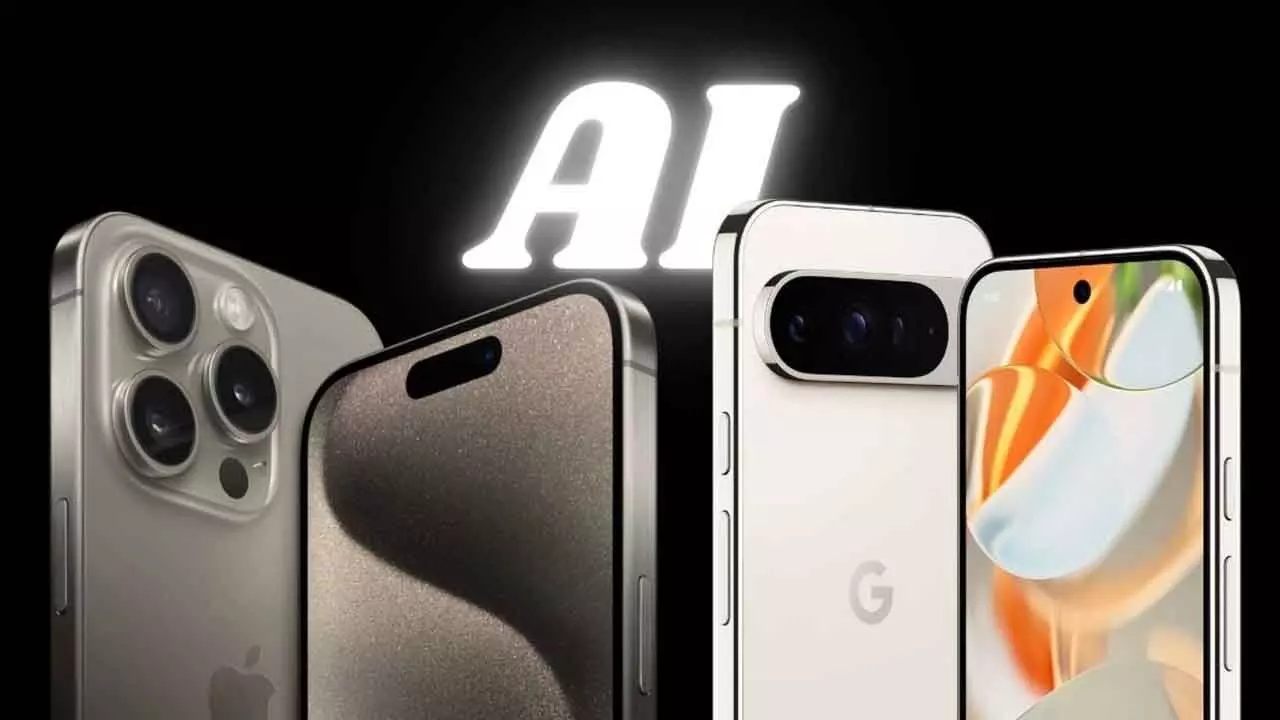Pixel 9’s Gemini AI vs. iPhone 16’s Apple Intelligence: A Battle of Cutting-Edge AI Features

Can Google’s Gemini AI in the Pixel 9 series outshine Apple Intelligence in the iPhone 16? Here’s a closer look at a few areas.
With the unveiling of the Google Pixel 9 series, the spotlight is on the advanced AI capabilities powered by Gemini AI. But how does it stack up against Apple’s much-anticipated Apple Intelligence, set to debut with the iPhone 16? While it’s still early to declare a definitive winner, here’s a look at three crucial areas where these AI powerhouses are vying for dominance.
1. AI Assistants: Gemini vs. ChatGPT-Enhanced Siri
The Google Pixel 9 series, featuring the Pixel 9, Pixel 9 Pro, and Pixel 9 Pro Fold, introduces a robust suite of AI-powered features under the Gemini AI banner. Central to this is the Gemini LLM (Large Language Model), which powers everything from weather AI summaries to the Gemini Assistant with Live mode. This assistant is designed to offer real-time, context-aware responses, making it a formidable tool in daily tasks.
On the other hand, Apple has upped the ante by integrating OpenAI’s ChatGPT into its ecosystem, starting with the iPhone 15 Pro running the iOS 18.1 beta and expected to be fully realized in the iPhone 16. ChatGPT enhances Siri’s capabilities, enabling it to handle complex queries, assist with document creation, and even generate text and images. Users can also interact directly with ChatGPT, providing an additional layer of privacy and functionality. While both AI assistants bring their strengths, the competition between Google’s Gemini and Apple’s ChatGPT-enhanced Siri is fierce, with each offering unique features tailored to their respective ecosystems.
2. Image Editing and Creation: Magic Editor vs. Image Playground
Google continues to push the boundaries of photo editing with the introduction of Magic Editor in the Pixel 9 series. This tool allows users to completely reimagine their photos by altering elements like the sky or water and even adding new objects using generative AI. The feature builds on Google’s previous innovations like Magic Eraser but takes it a step further by enabling more creative and transformative edits.
Apple’s response comes in the form of Image Playground, which will debut with the iPhone 16. This tool allows users to generate AI-powered images from prompts or existing photos, offering various styles such as animation, illustration, and sketch. Image Playground also includes Image Wand, a feature that can transform rough sketches into polished images. While Apple’s offering is impressive, it seems to be playing catch-up to Google’s more established photo editing tools.
3. Image Generation: Google Studio vs. Image Playground
In the realm of AI-generated images, Google Studio and Apple’s Image Playground are set to go head-to-head. Google Studio, running on the Tensor G4 chip and powered by the Google Imagen 3 AI model, allows users to create images from text-based prompts with a variety of styles and personal touches. This feature is a direct competitor to Apple’s Image Playground, which also leverages AI to produce original images in seconds.
Both tools offer a high level of creativity and customization, making it difficult to predict which will come out on top. However, with Google’s established track record in AI and Apple’s attention to detail, this battle is sure to produce some impressive innovations.
The AI Showdown Awaits
As the Pixel 9 series rolls out and the iPhone 16 looms on the horizon, the competition between Google’s Gemini AI and Apple Intelligence is heating up. While Google has the advantage of a more mature AI ecosystem, Apple’s integration of ChatGPT and new creative tools could tip the scales. However, with Apple Intelligence still in beta and many features yet to be fully realized, the ultimate showdown is yet to come. Stay tuned as these tech giants continue to push the boundaries of what AI can do on a smartphone.




















